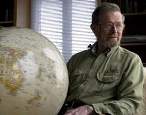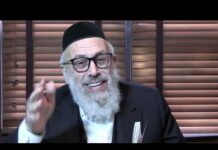 Fraidy Reiss of the Asbury Park Press reports: You owe George E. Smith a thank you.
Fraidy Reiss of the Asbury Park Press reports: You owe George E. Smith a thank you.
That’s assuming you have ever snapped a digital photo, captured moments on a video camera, watched high-definition television, surfed the Internet, undergone a medical endoscopy, conferenced via video or marveled over images from the Hubble Space Telescope, or even just waited for a cashier to scan your groceries.
Smith, 79, of Waretown, NJ, invented the technology that made all that possible. He is currently in Stockholm, Sweden, where he will receive the Nobel Prize in physics Thursday in recognition of his work.
Sitting in the living room of his modest lagoon-front home here on a recent morning, Smith mused about his years working as a physicist at Bell Labs, the technology he invented during those years that changed the world, and a new digital camera he had not quite figured out how to operate.
“I don’t know how to turn the flash off yet,” he confessed, peering closely at the pocket-sized Sony camera and poking at the buttons on it.
It was a bold admission from the man who has been called the father of digital imaging, the man whose work, as a Bell Labs spokesman noted, is everywhere.
“Probably the average person doesn’t realize how pervasive it is,” said the spokesman, Paul Ross.
When Bell Labs hired Smith in 1959, he did not hesitate to sign an agreement that he would give up patent rights to any of his work in exchange for $1. Straight out of graduate school at University of Chicago, where he had survived on “minimal grants,” the then-29-year-old was thrilled to land a high-paying job with prestigious Bell Labs in Murray Hill, Union County, Smith said.
Ten years later, he and co-worker Willard S. Boyle were brainstorming one afternoon, thinking of ways to improve data storage. Within about an hour they sketched the CCD, a chip that transforms patterns of light into useful electrical information, and they quickly realized it could be used for more than memory.
“It was, ‘Ah ha! We could use this as an imaging device, too!’ ” Smith said.
Putting a dollar value on the CCD is tricky; Bell Labs declined to provide a number. But Smith said he never regretted giving away the patent rights for nearly nothing — “”They actually handed me a dollar” — because if he had not had access to his employer’s “”beautiful lab,” he never would have come up with the CCD.
Besides, he added, “I won’t tell you about all the times we sat at the blackboard and came up with duds.”
His Nobel Prize co-winner, Boyle, also said he did not regret selling Bell Labs the patent rights to the CCD. He is interested in science, not money, Boyle said, and he feels glad just knowing astronomers now can see the surface of Mars and surgeons can perform better surgery because of his invention.
“So far, it’s very satisfying,” Boyle said in a telephone interview from his home in Nova Scotia.
Smith said he does not know who nominated him for the Nobel Prize or why “it took them 40 years to do it.”
He does know the award will not turn him into a millionaire. The Nobel Prize amount is 10 million Swedish kronor, or about $1.4 million, of which a quarter will go to Smith, a quarter to Boyle and half to another physicist, Charles K. Kao, now of Hong Kong, who made a discovery crucial to the development of fiber optics. So Smith’s portion of the prize amounts to about $350,000, and that is before Uncle Sam takes his share.
Still, Smith said, “I’m not going to turn it down. It’s the highest rung on the ladder.”
The presentation of the prize itself will take place in Stockholm during several days’ of festivities, all of which were laid out in a 15-page itinerary to which Smith and his wife, Janet Murphy, referred repeatedly while they shopped and prepared for their trip.
One day this week, a meeting with the other laureates and their families. Attire: business suit. Another day, a concert. Attire: lounge suit.
Lounge suit?
“How do you interpret lounge suit?” Smith wondered when he read that. He asked the owner of a local clothing store, but “the guy said, “You’re on your own.’‚”
So the father of digital imaging e-mailed the Nobel Foundation, asking for a definition. “They came back: black suit.”
And what will Murphy be wearing when she attends the awards ceremony Thursday and the formal dinner Friday with Sweden’s king and queen at their palace?
“Don’t ask me,” said Murphy, 72. “I went to Nordstrom.”
Throughout their stay in Stockholm, Smith and Murphy are being accompanied by an attendant and have a limousine at their disposal.
“This is the top prize,” Murphy said. “You should get treated this way.”
Smith has had only one job in his life: at Bell Labs, where he worked until 1986. That year, he and Murphy set out in their 31-foot sailboat, Apogee, for a three- or four-year trip around the world that turned into a 17-year journey.
Since their return, Smith has lectured and traveled. His life, he said, was simple and relaxing until Oct. 6, when he found out he won the 2009 Nobel Prize. Now reporters hound him and organizations around the world keep inviting him to give speeches.
“I could spend my next year talking,” Smith said.
Scientists have improved the CCD and reduced its size since Smith and Boyle introduced it, and Smith said he expects eventually it will be supplanted by even better technology.
“”Time rolls on,” he said, “and things keep getting invented.”
{APP/Noam Amdurski-Matzav.com Newscenter}











